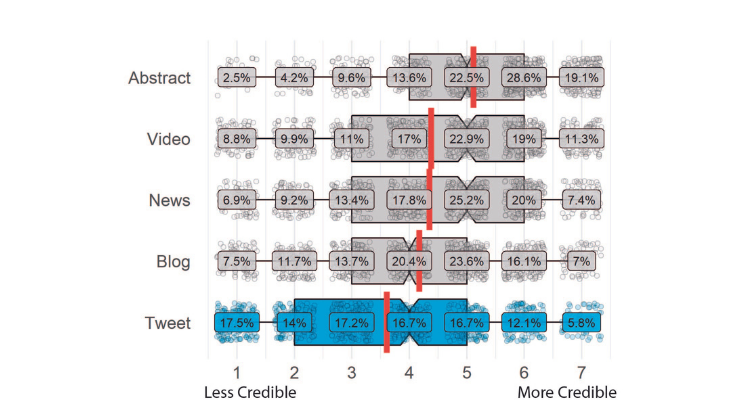While researchers often point to the relevance of their research, economic models and econometric methods are typically inaccessible to a wider audience. Gabriel Ahlfeldt explains how interactive dashboards represent a useful, yet underutilised, tool to enhance the accessibility of quantitative research and increase its impact, showing how a new, massive house-price index he has developed with colleagues can be used by researchers and the general public alike.
Academic research in economics and many other quantitative disciplines usually uses complex methodologies that are geared towards pushing the frontier of knowledge. To this end, research has to be specialised, often so specialised that it is only appreciated by other researchers within the discipline, sometimes only within a specific field. Along the way, however, academic research often generates outputs that are of interest to policymakers, practitioners, and sometimes even the general public. Unfortunately, the public usually misses out, in practice, mainly for two reasons. For one, the attention of researchers is very much focused on the demands of peer-reviewed research. For another, the presentation in academic working papers and journals is usually very technical. Interactive dashboards are a way to help increase the understanding and impact of such research for non-academic audiences.
The LSE-Real Estate Economics and Finance (REEF) index, which was recently published by the Centre for Economic Performance, is a prime example. A large literature has been concerned with generating constant-quality house prices indices. The challenge in this literature is to adjust for characteristics of transacted housing units, so that the change in the index reflects the change in the value of a housing unit and not a change in the composition of the transacted stock, such as newer or larger units. National house price indices have become a standard indicator of the state of the macroeconomy used by statistical offices or central banks around the world.
Interactive dashboards are a way to help increase the understanding and impact of such research for non-academic audiences.
Such national indices are not suitable for spatial economics research. To calibrate models of how households and firms choose locations, indices need to be available for small geographies such as neighbourhoods. This is a complex task since for small areas, there are often not enough transactions to generate a reliable index. So decisions need to be made as to how far to search for additional transactions and as to what adjustments need to be made to ensure that the index best reflects the trend within a neighbourhood and not its surroundings. As part of a recent research project, we have created an algorithm that makes these decisions. The program is written in such a way that researchers familiar with conventional statistical software can easily generate their indices for any geography by feeding property transaction data into the algorithm. To generate the LSE-REEF index, we applied the method to about 35,000 output areas in England and Wales and all years from 2010 to 2020. We combined transaction prices from HM Land Registry Price Paid Data with various property characteristics recorded in Energy Performance of Buildings Data. This way, we can use regression techniques to hold the quality of a representative property constant, so that changes in the index over space and time refer to changes in the value of an otherwise comparable housing unit.
The resulting index contains a wealth of information that is of potential interest to a wider public: Who does not want to know how the value of their house has evolved? However, browsing a spreadsheet with nearly 400,000 cells is not exactly a user-friendly experience. Therefore, we have created a dashboard that allows users to zoom into their neighbourhood and recover a visualization of the local house price time series by simply clicking on their property on a map.

Screenshot of a visualization produced by the REEF index.
The potential of interactive dashboards in academic research, however, goes much further. Rather than storing pre-processed data in the cloud that can be queried by the user (what we do for the LSE-REEF index), an entire economic model could be moved into the cloud. Instead of just showing current and past property values, such a dashboard could show how property prices would respond to a new railway line such as Crossrail 2 or High Speed 2, depending on how the user chooses the route. Interactions with other policies such as changes to land use and height restrictions could also be modelled. Such a dashboard would be far more than a toy to entertain the curiosity of homeowners. It could be a device that allows policymakers and planners to access state-of-the-art economic models when designing spatial policies, potentially leading to more informed policy decisions.
Writing dashboards requires skills that researchers in economics and other social sciences usually do not possess.
Such dashboards, however, are not easy to implement. Writing dashboards requires skills that researchers in economics and other social sciences usually do not possess. It will also typically require extensive rewriting of existing code to enable models to run within a different software environment. These are tasks that must be delegated to specialised software developers, but this comes at a price. So, a necessary condition for interactive dashboards to become more widespread in academic research will be the availability of dedicated funds. Given the potential to enhance the impact of academic research and improve policy making, this would be well-spent money.
The content generated on this blog is for information purposes only. This Article gives the views and opinions of the authors and does not reflect the views and opinions of the Impact of Social Science blog (the blog), nor of the London School of Economics and Political Science. Please review our comments policy if you have any concerns on posting a comment below.
Image Credit: Campaign Creators via Unsplash.








Great blog and really powerful example of the potential of such tools, and how to develop them. I would argue that at present this is just potential and the jury is out, on whether or not good is money well spent, as you conclude. I see many similar tools that are never actually used by policy colleagues – the approach to coproducing the impact based on the needs of the policy group is a stronger predictor of impact in my experience than the tools used.